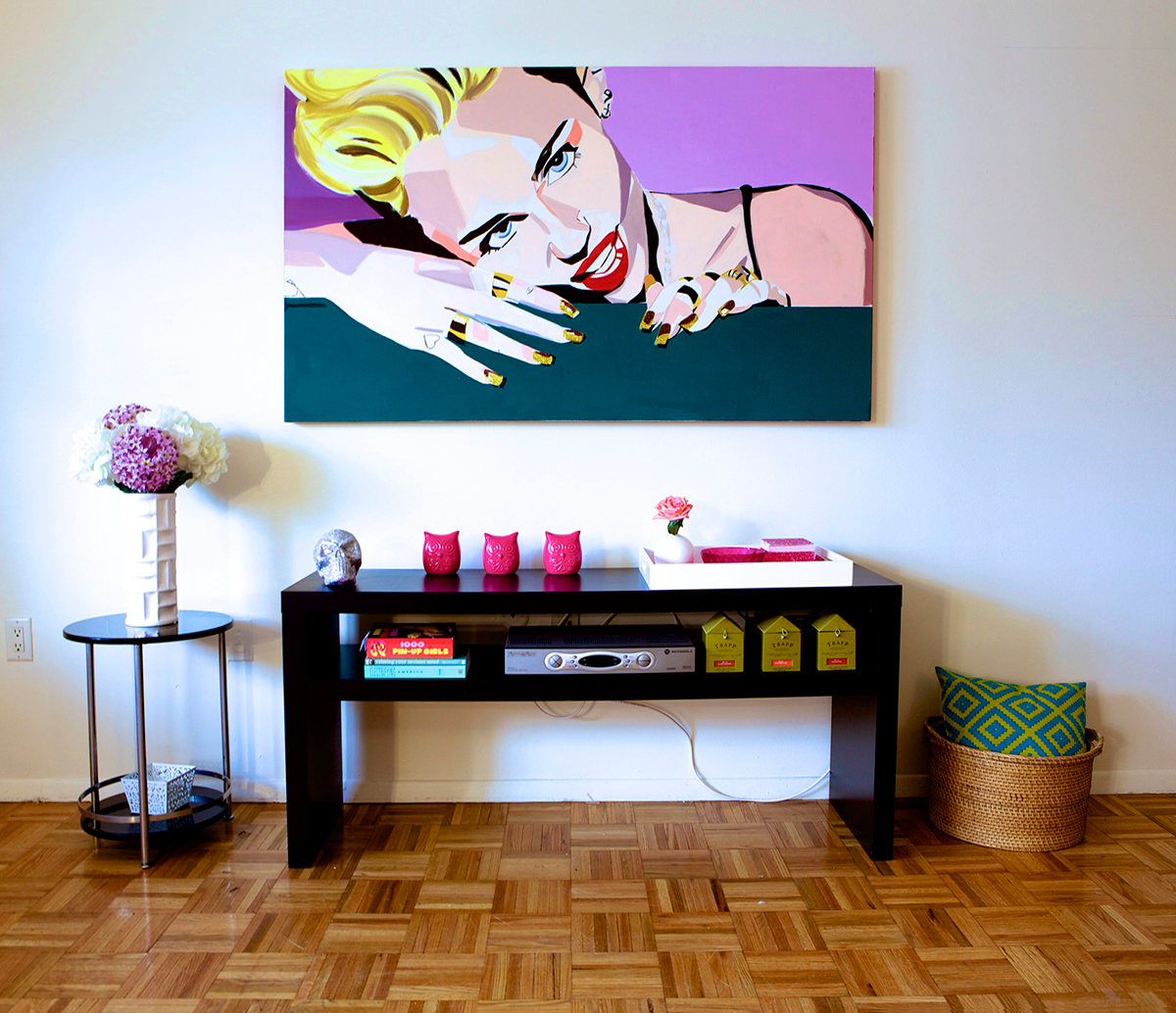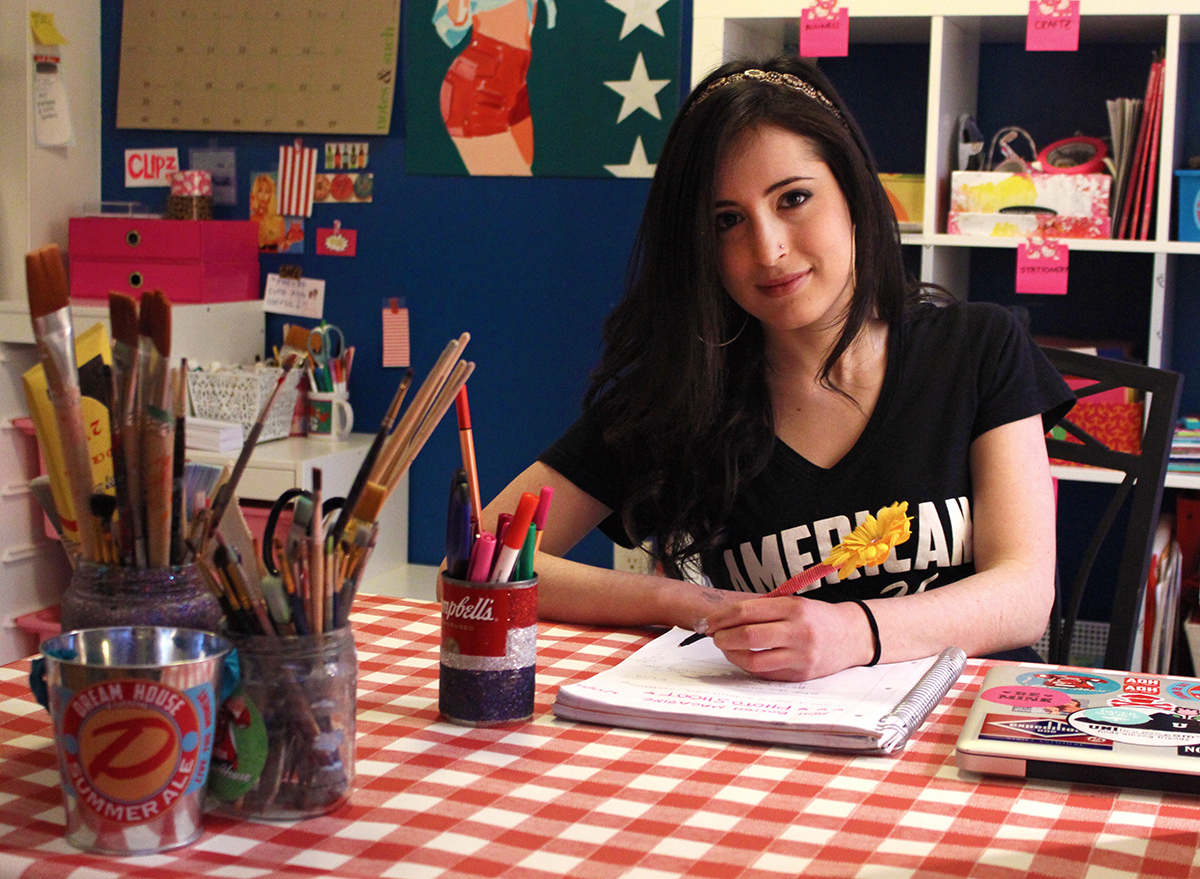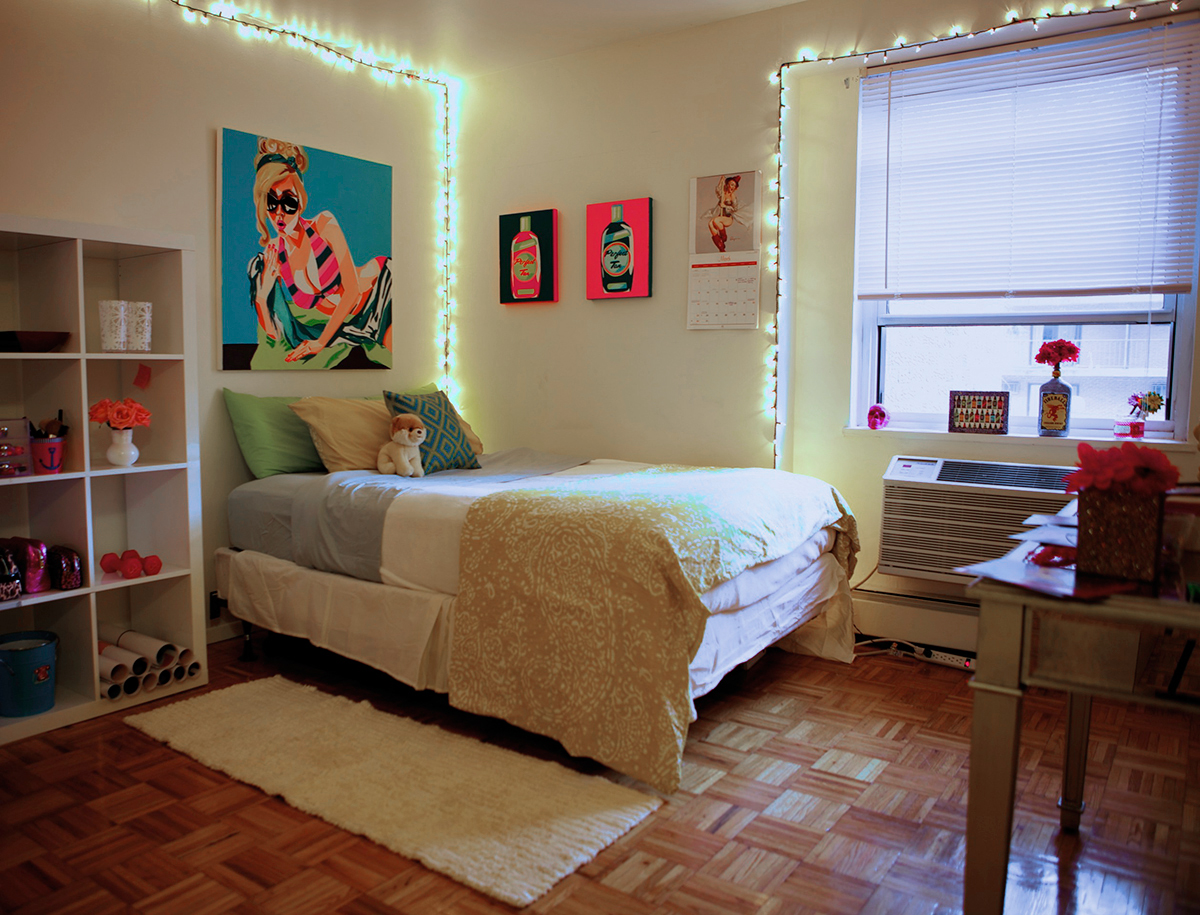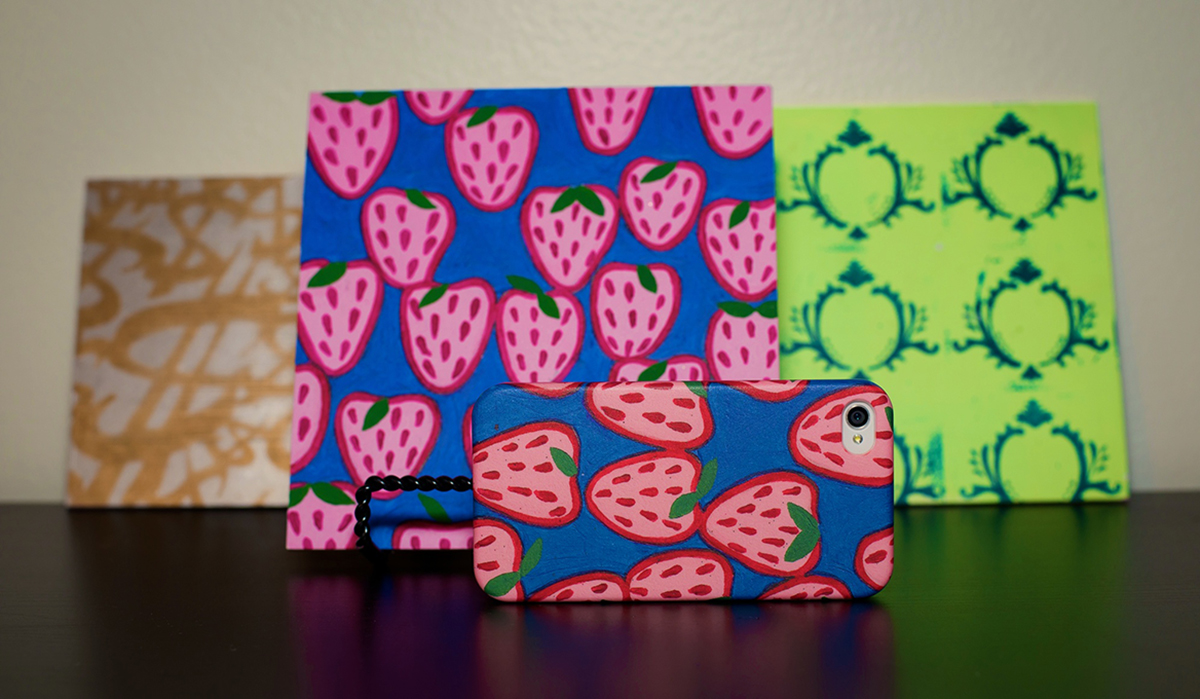Meet American Dream House, the Pop Art Brand of the Future

A LIVING ROOM SPACE FEATURING “SO TURNT UP,” AN AMERICAN DREAM HOUSE ORIGINAL PAINTING. (PHOTO BY SEBASTIAN SCHOLL)
American Dream House founder Molly Rosner recalls the controversy her pop art paintings used to arouse at her alma mater, Boston University’s College of Fine Arts.
“Critiques during finals always turned into a huge battle between me and the professors and the TAs,” says Rosner. “It was hard for them to understand my process because I wasn’t painting large oil paintings in my studio all the time. I was doing photo shoots and using a projector and acrylic paint—all stuff they weren’t used to. But I could tell they were secretly into it, so it didn’t really bother me.”
Rosner also took a different approach when she was selected by BU to be featured in a solo exhibit at an on-campus gallery a few months before her graduation last year. Rather than organizing a traditional student art show, she used the opportunity to launch American Dream House, an enterprise specializing in pop art paintings and accessories.
“I wanted to do something that’s not typical, and something that would launch me into a career,” she says.
Now, almost a year after graduation, Rosner is as focused on the brand as ever. She’s moved out of her undergraduate apartment in Allston and into her first post-grad apartment in Brookline, just as many of her first commissioned paintings that once decorated dorm-room walls have made their move to apartments now rented out by young professionals. Eventually, these young professionals are likely to use the paintings to decorate their first homes, but while that next transition might take another few years, Rosner’s work is already making its way into more of Boston’s homes. A while back, a woman in her 50s or 60s purchased “Mommy is Busy (1),” a colorful acrylic of a vixen with her hair in rollers, one hand around a martini glass, and another on a man’s lap, and recently, a client with college-age children inquired about commissioning a work of his own.
As she expands her clientele, Rosner continues to work with a team of undergraduate students at BU who handle American Dream House’s marketing and business efforts while she produces the art. “I felt like I was not only starting a business, but also a movement for students to jump in and create something totally brand new for ourselves,” she says. “I think that young people working together towards one goal is really powerful, and I just felt that we would be most successful as a team.”
As the brand grows, Rosner sees the creative aspect transforming into more of a team effort, too. Right now, the artists on the team offer creative input and assistance with the photoshoots that all American Dream House artwork—heavily inspired by ’50s pin-up girls, current pop stars, movie posters, and advertisements—is derived from, while the art itself is physically produced by Rosner herself, created by projecting a photograph onto a canvas and tracing the image with paint. But as demand increases, Rosner acknowledges the possibility of instituting an assembly line process of production that involves several artists physically producing the artwork, similar to the mass production methods of Andy Warhol, one of her creative influences.
“It’s the kind of art that I’ve always been drawn to, so I started making it myself,” she says. “It’s not fine art to me—it’s something that people would want in their homes.”
So far, Rosner has been incorporating her designs into personal accessories like iPhone cases, lighters, and liquor bottle vases, but plans to expand the American Dream House brand into bed sheets, towels, accent pillows, other home accessories, and possibly even furnishings that would initially sell at a retailer like Urban Outfitters, and eventually fill up its own storefronts.
“I want us to be in between just art and home décor,” says Rosner. “Lifestyle design—that’s where we fit.”
As for clientele, Rosner has been pleasantly surprised by the number of college students willing to spend hundreds of dollars on a custom painting—often as gifts for significant others, she says—to those only able to purchase the more affordable prints, posters, or iPhone cases, to older customers with an affinity for pop art.
“They don’t have to be young,” says Rosner. “They can be young-spirited.”
For more information on products and custom artwork, visit americandreamhouse.com or check out American Dream House’s Facebook, Instagram, and Twitter.

American Dream House founder and creative director, Molly Rosner, sits in the studio space inside her Brookline apartment. (Photo by Olga Khvan)

A BEDROOM SET FEATURING “YOU FEEL LIKE PARADISE,” AN AMERICAN DREAM HOUSE ORIGINAL PAINTING, ABOVE THE BED. (PHOTO BY SEBASTIAN SCHOLL)

A sampling of American Dream House patterns, which can be incorporated into iPhone cases. The strawberry pattern in the front was painted by Amy Cuneo, a fellow CFA graduate, while the patterns in the back were painted by Rosner herself. (Photo by Jackie Robertson)


